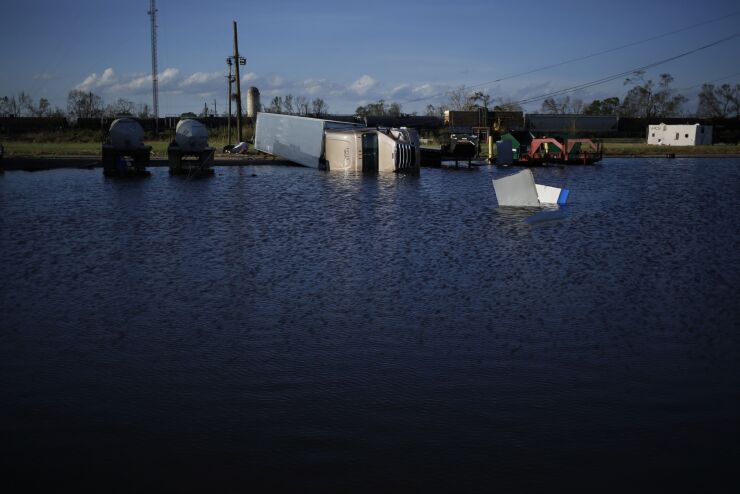Analysts of commercial mortgage-backed securities and residential mortgage-backed securities say loss exposure to property damage from Hurricane Laura appears to be limited, due to property-level insurance and funds fronted from servicers.
“Historically, hurricanes have resulted in minimal delinquencies in CMBS, since property-level insurance has mitigated the effects of storm damage,” said Stephen Renna, an analyst at Moody’s Investors Service. Also, “master servicers are generally able to advance debt service payments while borrowers navigate the insurance claims process for lost rent and damage-repair costs.”
According to Bloomberg, damages from the storm could approach $15 billion, much of it affecting Louisiana which received the brunt of the storm's impact.
Renna estimated that properties in the storm’s path, at least as projected on Thursday, account for about $25.4 billion, or 6.1 percent of CMBS deals that Moody’s rates.
In a special alert on Wednesday, Kroll Bond Rating Agency says it preemptively identified 141 CMBS deals representing $1.23 billion, by allocated loan amount, that were located in parts of Louisiana and Texas that had received mandatory evacuation orders.

Associated Press reports have described a major hurricane, a Category 4 storm with top wind speeds of 150 mph, that unleashed its fury on the areas bordering Louisiana and Texas. When it made landfall it was stronger than Hurricane Katrina, which reached Category 3 strength when it struck in 2005.
Analysts are also assessing Laura’s aftermath on rated RMBS deals containing mortgages on homes in the storm’s path. Kroll says that it rates 233 deals, representing 191 prime and non-prime private label securities and 42 GSE agency credit-risk transfer deals with properties located in Laura’s cone, or path. That represents $684 billion in collateral, and 3.2 percent of that collateral balance, or $21.8 billion, is located in areas that have declared an emergency.
In its report, “Hurricane Laura: Potential RMBS Exposure,” Kroll underscores that the storm could be ranked as the fifth most impactful storm to its rated RMBS portfolio. Episodes of delinquency spikes have happened after prior storms, it says, but that such surges could be short-lived.
Several factors mitigate the fallout, and they involve the use of several layers of flood and wind insurance coverage.
Kroll acknowledges that estimating what portion of damaged properties in Laura’s path might have active flood insurance could prove difficult, because of the storm’s sheer size. The National Weather Service projected a cone that would turn east and affect several states, from Kentucky to New Jersey, before petering out into the Atlantic Ocean.





